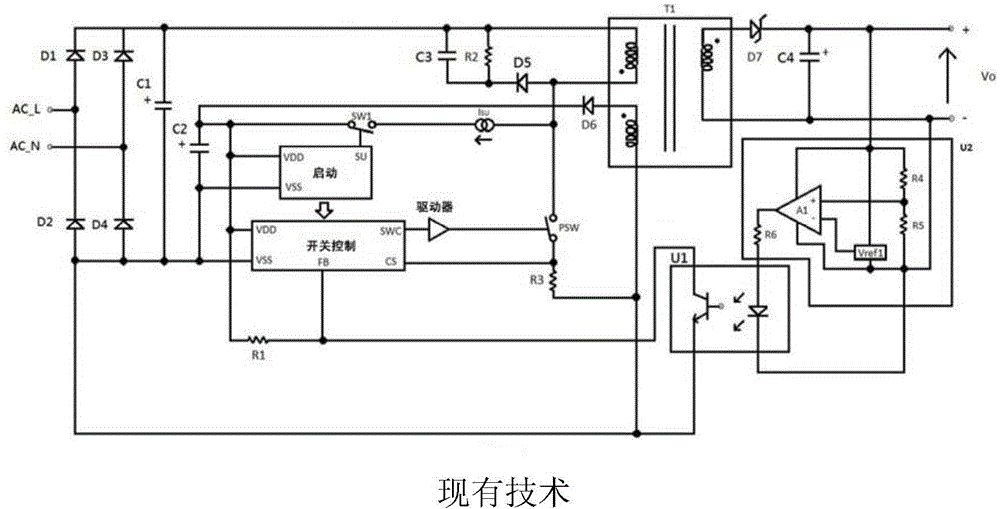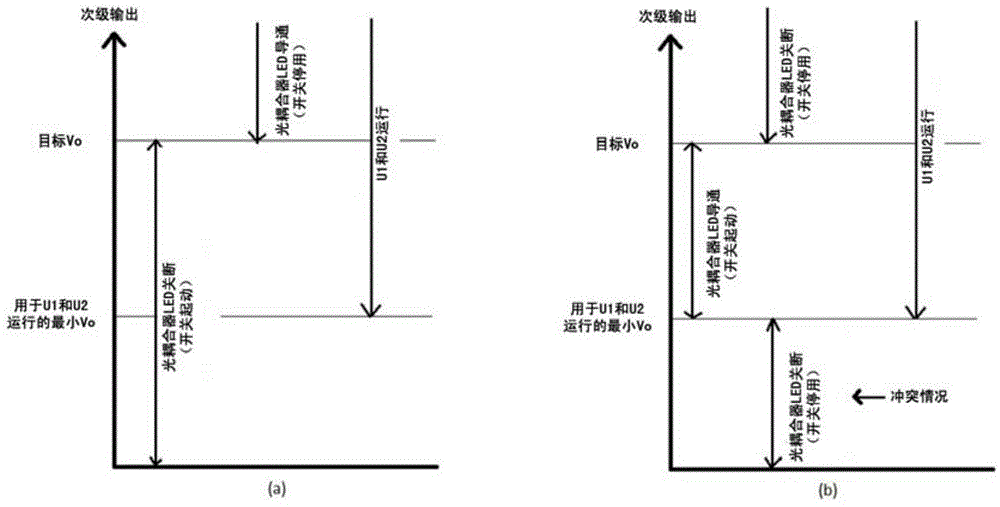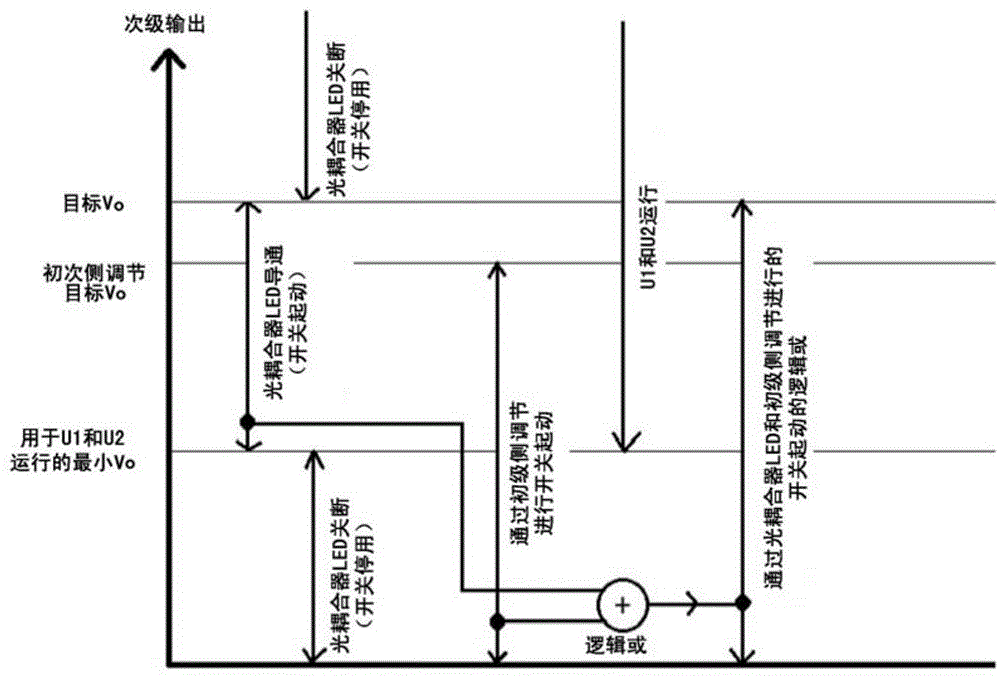Switching conversion circuit
A switch conversion and circuit technology, which is applied to output power conversion devices, electrical components, DC power input conversion to DC power output, etc., can solve problems such as inability to apply logic inversion
- Summary
- Abstract
- Description
- Claims
- Application Information
AI Technical Summary
Problems solved by technology
Method used
Image
Examples
Embodiment Construction
[0023] Now will refer to the attached drawings by example image 3 with Figure 5 To describe the preferred form of the present invention.
[0024] Reference image 3 with Figure 4 , Which shows that the optocoupler feedback control is added to the primary side regulation switching converter circuit as follows, where image 3 , The primary adjustment target Vo should be equal to or greater than the target Vo.
[0025] The conduction of the optocoupler LED can start the switching operation. In other words, it can be regarded as adding the primary side regulation control to the switching converter circuit with optocoupler feedback, so that the switching operation can be started when the LED of the optocoupler is turned on. In either case, the switching operation is a probable logic start.
[0026] in Figure 4 Among them, T1 is a transformer required for switching with PSW as a power switching device. Diodes D1, D2, D3, and D4 form a bridge rectifier circuit that converts AC input ...
PUM
 Login to View More
Login to View More Abstract
Description
Claims
Application Information
 Login to View More
Login to View More - R&D
- Intellectual Property
- Life Sciences
- Materials
- Tech Scout
- Unparalleled Data Quality
- Higher Quality Content
- 60% Fewer Hallucinations
Browse by: Latest US Patents, China's latest patents, Technical Efficacy Thesaurus, Application Domain, Technology Topic, Popular Technical Reports.
© 2025 PatSnap. All rights reserved.Legal|Privacy policy|Modern Slavery Act Transparency Statement|Sitemap|About US| Contact US: help@patsnap.com



